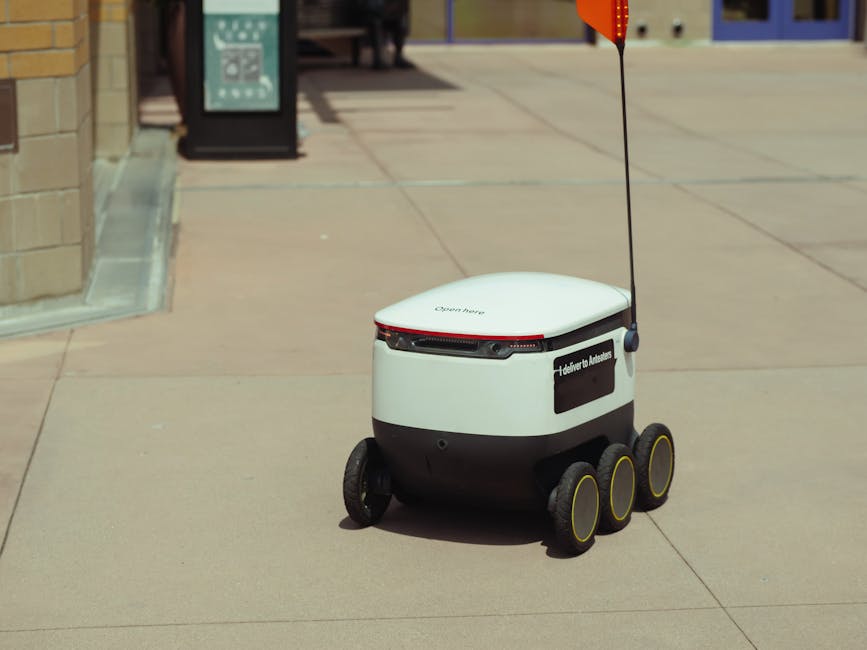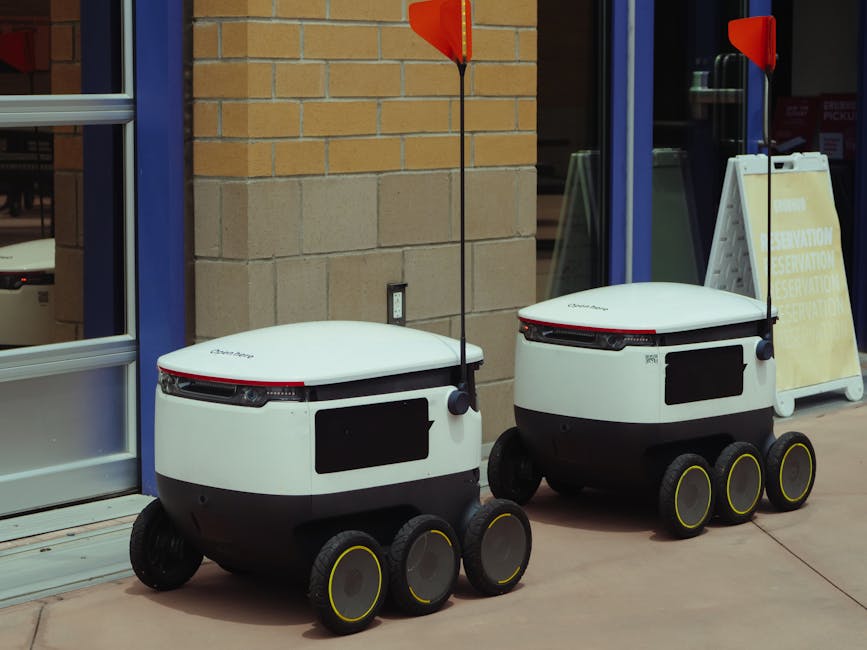Autonomous Vehicle Safety Innovations: Revolutionizing the Roads
Imagine a world where cars drive themselves, navigating through traffic with precision and care, eliminating human error and making our roads safer for everyone. This futuristic vision is becoming a reality with the rapid advancements in autonomous vehicle safety innovations. From self-driving cars to smart highways, technology is reshaping the way we think about transportation and paving the way for a more efficient and secure future on the roads.
In this article, we will delve into the world of autonomous vehicle safety innovations, exploring the groundbreaking technologies, current applications, future possibilities, and the implications of this transformative shift in the automotive industry. Join us on this journey as we uncover the key insights and trends shaping the future of transportation.
The Evolution of Autonomous Vehicle Safety Innovations

Autonomous vehicle safety innovations have come a long way since the concept was first introduced. The idea of cars that could drive themselves seemed like science fiction just a few decades ago, but with the rapid advancements in technology, it has become a viable and promising reality. From early experiments in the 1920s to the first self-driving car prototypes in the 1980s, the evolution of autonomous vehicles has been a fascinating journey.
One of the key milestones in the development of autonomous vehicle safety innovations was the DARPA Grand Challenge, a series of competitions organized by the Defense Advanced Research Projects Agency to promote the development of autonomous vehicle technologies. The first challenge in 2004 saw several teams attempt to navigate a course in the Mojave Desert using autonomous vehicles, with limited success. However, subsequent challenges in 2005 and 2007 saw significant improvements, with teams completing the courses successfully.
Today, autonomous vehicle safety innovations are at the forefront of technological advancements in the automotive industry. Companies like Tesla, Google, and Uber are investing heavily in self-driving car technologies, with the aim of bringing fully autonomous vehicles to the market in the near future. These innovations have the potential to revolutionize transportation, making our roads safer, more efficient, and more accessible for everyone.
The Technology Behind Autonomous Vehicle Safety Innovations

At the heart of autonomous vehicle safety innovations lies a complex web of technologies that work together to enable cars to navigate, communicate, and make decisions on their own. These technologies include sensors, cameras, radar, lidar, GPS, and artificial intelligence algorithms that analyze data in real-time to detect obstacles, navigate traffic, and make split-second decisions to ensure the safety of passengers and other road users.
Sensors play a crucial role in autonomous vehicle safety innovations, providing cars with the ability to perceive their environment and react to changing conditions. Cameras capture visual information, while radar and lidar sensors detect objects in the car’s vicinity. GPS technology provides precise location data, while artificial intelligence algorithms process this information to make decisions about speed, direction, and navigation.
One of the key challenges in autonomous vehicle safety innovations is ensuring that these technologies work seamlessly together to create a reliable and robust system. Engineers and researchers are constantly refining and improving these technologies to enhance the safety and performance of autonomous vehicles, pushing the boundaries of what is possible in the world of transportation.
Real-Life Applications of Autonomous Vehicle Safety Innovations

Autonomous vehicle safety innovations are already making an impact in the real world, with a wide range of applications across different industries and sectors. Self-driving cars are perhaps the most well-known example of autonomous vehicle safety innovations, with companies like Tesla and Waymo leading the way in developing and testing these technologies on public roads.
Another key application of autonomous vehicle safety innovations is in the field of logistics and transportation. Autonomous trucks are being developed and tested to improve the efficiency and safety of long-haul transportation, reducing the risk of accidents and improving the overall reliability of supply chains. These innovations have the potential to revolutionize the way goods are transported, making logistics more efficient and cost-effective.
Smart cities are also embracing autonomous vehicle safety innovations to improve traffic management, reduce congestion, and enhance the overall safety of urban transportation systems. Smart highways equipped with sensors and communication technologies are being developed to enable cars to communicate with each other and with infrastructure, creating a seamless and connected transportation network that is more efficient and secure.
The Future of Autonomous Vehicle Safety Innovations

As we look towards the future, the potential of autonomous vehicle safety innovations is truly exciting. The advancements in technology, coupled with the growing demand for safer and more efficient transportation solutions, are driving the development of new and innovative applications of autonomous vehicles. From drones delivering packages to autonomous taxis ferrying passengers around cities, the possibilities are endless.
One of the key areas of focus for the future of autonomous vehicle safety innovations is in the development of artificial intelligence algorithms that can learn and adapt to changing conditions. Machine learning and deep learning technologies are being used to improve the decision-making capabilities of autonomous vehicles, enabling them to make more informed and intelligent choices on the road.
Regulatory frameworks and ethical considerations are also important factors to consider in the future of autonomous vehicle safety innovations. As self-driving cars become more prevalent on our roads, policymakers and industry stakeholders will need to work together to establish guidelines and standards that ensure the safety and security of autonomous vehicles and their passengers.
Common Misconceptions About Autonomous Vehicle Safety Innovations
Despite the many benefits and potential of autonomous vehicle safety innovations, there are still some common misconceptions and concerns that surround this emerging technology. One of the most prevalent myths is that self-driving cars are not safe and are prone to accidents. While there have been incidents involving autonomous vehicles, the overall safety record of self-driving cars is actually quite impressive, with studies showing that they are generally safer than human drivers.
Another misconception about autonomous vehicle safety innovations is that they will lead to widespread job losses in the transportation industry. While it is true that autonomous vehicles have the potential to disrupt traditional transportation models, they also have the potential to create new job opportunities in areas such as software development, data analytics, and maintenance and repair of autonomous vehicles.
Conclusion
In conclusion, autonomous vehicle safety innovations are revolutionizing the way we think about transportation, paving the way for a safer, more efficient, and more connected future on the roads. From self-driving cars to smart highways, technology is shaping the future of transportation in ways we have never imagined. As we continue to push the boundaries of what is possible, the potential of autonomous vehicle safety innovations is truly limitless.
Whether it’s improving traffic management, reducing accidents, or enhancing the overall efficiency of transportation systems, autonomous vehicle safety innovations hold the key to a brighter and more sustainable future on our roads. By embracing these technologies and working together to overcome the challenges and obstacles that lie ahead, we can create a world where autonomous vehicles are not just a novelty, but a necessity.




